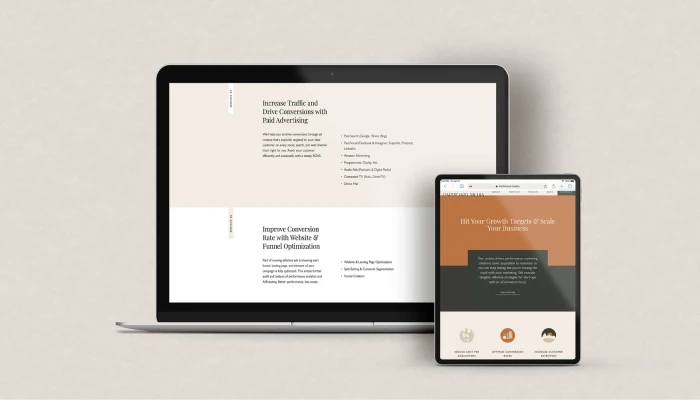Hello!
 In today’s digital age, email remains a vital tool for businesses and individuals, but ensuring your emails reach the inbox rather than the spam folder is a persistent challenge.
In today’s digital age, email remains a vital tool for businesses and individuals, but ensuring your emails reach the inbox rather than the spam folder is a persistent challenge.
By crafting humanized, engaging emails and using spam checker tools, you can boost deliverability and connect with your audience.
This guide outlines strategies to make emails feel personal, the role of spam checkers, and best practices to avoid the spam folder.
Strategies for Humanizing Your Emails
 To make your emails resonate, focus on these five strategies:
To make your emails resonate, focus on these five strategies:
- Personalize Content: Move beyond just names—use data to tailor emails to recipients’ interests, past purchases, or shared connections. For example, reference a recent interaction or offer personalized product suggestions.
- Write Conversationally: Ditch formal jargon for a natural tone. Use contractions (e.g., “you’re”), ask engaging questions, or add subtle humor to feel relatable.
- Keep It Concise: Avoid overwhelming readers with lengthy emails. Focus on one key message, use bullet points, and highlight critical details with bold or italics.
- Craft Compelling Subject Lines: Create clear, curiosity-driven subject lines without all caps or excessive punctuation. For example, “Your Exclusive Offer Awaits” grabs attention effectively.
- Include a Clear Call-to-Action (CTA): Guide recipients with actionable CTAs like “Get Your Free Quote” or “Explore Now.” Ensure they’re visible and straightforward.
The Role of Email Spam Checker Tools
 Spam checker tools are essential for ensuring emails land in the inbox by identifying potential issues:
Spam checker tools are essential for ensuring emails land in the inbox by identifying potential issues:
- Content Analysis: Detect spammy words (e.g., “free,” “guaranteed”) or phrases that trigger filters.
- Formatting Check: Verify proper HTML coding and text versions for compatibility across email clients.
- Blacklist Monitoring: Check if your domain or IP is blacklisted, which can block delivery.
- Sender Reputation: Assess factors like bounce rates and engagement to gauge your sender score.
Tools like SpamAssassin or Litmus help refine emails pre-send, boosting inbox placement rates.
Also read: What Is Email Personalization?
Why Emails End Up in Spam
 Emails often land in spam due to:
Emails often land in spam due to:
- Poor Sender Reputation: High bounce rates, spam complaints, or low engagement signal unreliability.
- Spammy Content: Excessive exclamation marks, all caps, or words like “urgent” trigger filters.
- Lack of Authentication: Unverified emails (missing SPF, DKIM, or DMARC) raise suspicion.
- High Bounce Rates: Sending to invalid addresses harms your reputation.
- Low Engagement: Unopened or unclicked emails suggest irrelevance, prompting spam filtering.
Best Practices to Avoid the Spam Folder
 Maximize deliverability with these eight practices:
Maximize deliverability with these eight practices:
- Maintain a Clean Email List: Regularly remove inactive or invalid addresses to lower bounce rates.
- Authenticate Emails: Use SPF, DKIM, and DMARC to verify your sender identity and build trust.
- Choose a Reliable ESP: Opt for trusted email service providers like Mailchimp or Constant Contact for robust deliverability tools.
- Monitor Sender Reputation: Use SenderScore or Talos Intelligence to track and improve your reputation.
- Avoid Spammy Content: Steer clear of promotional buzzwords and excessive punctuation; focus on value-driven language.
- Encourage Engagement: Boost open and click-through rates with personalized content and strong CTAs.
- Offer Easy Unsubscribe Options: Include a clear unsubscribe link to reduce spam complaints and comply with regulations like CAN-SPAM.
- Test Emails: Run emails through spam checkers to catch issues before sending.
 Also read:
Also read:
- What Sports Can Teach Us About Boosting Virgin Media Reception
- 4 Ways Your Process Automation Strategies Will Yield Long-Term Benefits
- How to Start a Food Blog and Make Money
Conclusion
 Effective email communication in 2025 hinges on humanizing your messages and optimizing for deliverability. By personalizing content, adopting a conversational tone, keeping emails concise, and using compelling subject lines and CTAs, you can engage recipients.
Effective email communication in 2025 hinges on humanizing your messages and optimizing for deliverability. By personalizing content, adopting a conversational tone, keeping emails concise, and using compelling subject lines and CTAs, you can engage recipients.
Pair these strategies with spam checker tools and best practices — like authenticating emails, maintaining clean lists, and monitoring reputation — to ensure inbox placement. Implement these tactics to make your emails stand out, foster connections, and drive results in today’s competitive digital landscape.
Thank you!
Join us on social media!
See you!






